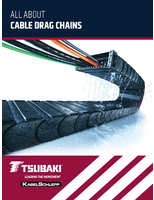IPC announces updates to IPC-6012 and IPC-A-600.
Share:
Press Release Summary:
IPC-A-600H, Acceptability of Printed Boards, features 95 new and updated photos and illustrations, which help inspectors understand anomalies that can impact performance and those that are cosmetic. Standard offers expanded coverage on topics such as solder mask coverage, etchback, via fill, and flexible circuits. Determining how many boards and/or test coupons to check is addressed by IPC-A-600's companion document, IPC-6012C, Qualification and Performance Specification for Rigid Printed Boards.
Original Press Release:
Updates to IPC-6012 and IPC-A-600 Released: Five Years of New Board Technologies and Processes Bring Significant Changes to Specifications
BANNOCKBURN, Ill., USA, - If a picture is worth a thousand words, the new H revision of IPC-A-600, Acceptability of Printed Boards, is a priceless work of art for fabricators and assemblers, particularly inspectors and product developers. IPC - Association Connecting Electronics Industries® announces the new releases of IPC-A-600H and its companion document the C revision of IPC-6012, Qualification and Performance Specification for Rigid Printed Boards.
The first major upgrade since 2004, IPC-A-600H features 95 new and updated photos and illustrations, pushing the total number of images to 326. These images go a long way in helping inspectors understand the difference between anomalies that can impact performance and lifetimes and those that are merely cosmetic blemishes. "Some laminate imperfections like measles are categorized as anomalies, but they can be acceptable," noted John Perry, technical project manager at IPC and staff liaison to the IPC-A-600 Task Group. "Other laminate imperfections that may look like measles may be instances of delamination that can propagate under thermal stress and therefore, require degrees of acceptability."
In addition to photos, the standard offers new and expanded coverage on topics such as solder mask coverage, etchback, plated-hole wall integrity, via fill, and flexible circuits. The enhancements help board manufacturers and customers agree on the quality of boards.
For developers who must determine plating thicknesses and other parameters, IPC-A-600H addresses complex issues like copper cap-plating of vias and sufficient copper-wrap plating.
With this update, IPC-A-600H also expands its reach to help suppliers of flexible circuits. Criterion for how much a flex circuit can be bent or folded is now available. The new document also addresses coverlays that are sometimes used to protect flex circuits. Adhesive coverlays keep contaminants from interaction with the active circuits, so cracks in the coverlay can have a major impact on reliability. Perry explains that these additions to the flexible circuits section of the standard originated from an IPC Task Group in China.
Determining how many boards and/or test coupons to check is an issue addressed by IPC-A-600's companion document, IPC-6012C. A document used for specifying circuit boards, IPC-6012 details frequency of inspection, instructing how many panels must be examined within a production lot for a given performance class to ensure quality. When OEMs request boards built to 6012 specifications, boardmakers know precisely what to provide.
While IPC-6012C is used by engineers who specify parts, IPC-A-600H is used by the shop floor inspectors who ensure that boards destined for end systems live up to the requirements established by those engineers. Both documents were updated at the same time, ensuring that all data used by inspectors represents the industry's latest techniques. Together, the two documents provide a major advance that will help companies improve quality without dramatically increasing the amount of time spent on inspection. As OEMs move closer to zero defect levels, the standards will help fabricators and assemblers meet ever-tightening requirements.
Looking forward, companies can expect further improvement. Considered living documents, IPC-A-600 and IPC-6012 are in a continual state of improvement. Before the latest revisions were completed, the standard's next series of enhancements were being planned, including finer geometries, high density printed boards, the proximity of microvias and stacked microvias that go from one layer to another.
The first copies of IPC-6012C, Qualification and Performance Specification for Rigid Printed Boards, and IPC-A-600H, Acceptability of Printed Boards, will be available for purchase in the IPC Bookstore at IPC APEX EXPO, booth 2073. IPC member pricing will be extended to all IPC APEX EXPO attendees, regardless of membership status.
For more information on IPC-6012C and IPC-A-600H, visit ipc.org/6012C and ipc.org/600H or contact John Perry, IPC technical project manager, at JohnPerry@ipc.org or +1 847-597-2818.
A full day workshop on the revisions to the standards will take place June 8 in Irvine, Calif. and June 10 in San Jose, Calif. Visit www.ipc.org/workshops-brochure for complete details.
For information on IPC APEX EXPO or to register, visit www.IPCAPEXEXPO.org.
About IPC
IPC (www.IPC.org) is a global trade association based in Bannockburn, Ill., dedicated to the competitive excellence and financial success of its 2,700 member companies which represent all facets of the electronics industry, including design, printed board manufacturing, electronics assembly and test. As a member-driven organization and leading source for industry standards, training, market research and public policy advocacy, IPC supports programs to meet the needs of an estimated $1.7 trillion global electronics industry. IPC maintains additional offices in Taos, N.M.; Arlington, Va.; Garden Grove, Calif.; Stockholm, Sweden; Moscow, Russia; and Shanghai and Shenzhen, China.




